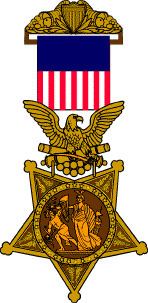Years of service 1864 - 1898 | Rank Sergeant) Name Otto Voit | |
 | ||
Unit U.S. 7th Cavalry Regiment | ||
You Otto Vote Voit
Otto Emil Voit (February 5, 1845 – June 1, 1906) was a United States Army soldier and a recipient of America's highest military decoration—the Medal of Honor—for his actions in the Battle of the Little Bighorn.
Contents
Guests Bruce Carter & Otto Voit...
Biography
Voit immigrated to the United States in 1862, and enlisted in the Union Army 13th Infantry during the American Civil War in December 1864. He was a "saddler" (saddle-maker) in Germany and with the U.S. Army. He deserted his unit at a Missouri River post on February 21, 1866 and subsequently reenlisted in Company H of George Armstrong Custer's Seventh Cavalry in December 1866 using the alias Frank May. On December 5, 1873 he surrendered as a deserter and received clemency by Presidential proclamation.
Voit was wounded in the Reno-Benteen hilltop action at the Little Bighorn. He was issued the Medal of Honor on October 5, 1878 for his actions during the battle, specifically for providing covering fire for his comrades who went to get water for the wounded on June 25, 1876.
Voit was discharged in 1898 as Saddler Sergeant at Fort Grant, Arizona. He moved to Louisville, Kentucky and in 1902 became a United States citizen. He died of influenza at age 61 and was buried in Saint Stephens Cemetery in Louisville.
Medal of Honor citation
Rank and organization: Saddler, Company H, 7th U.S. Cavalry. Place and date: At Little Big Horn, Mont., June 25, 1876. Entered service at: ------. Birth: Germany. Date of issue: October 5, 1878.
Citation:
Volunteered with George Geiger, Charles Windolph, and Henry Mechlin to hold an exposed position standing erect on the brow of the hill facing the Little Big Horn River. They fired constantly in this manner for more than 20 minutes diverting fire and attention from another group filling canteens of water that were desperately needed.
